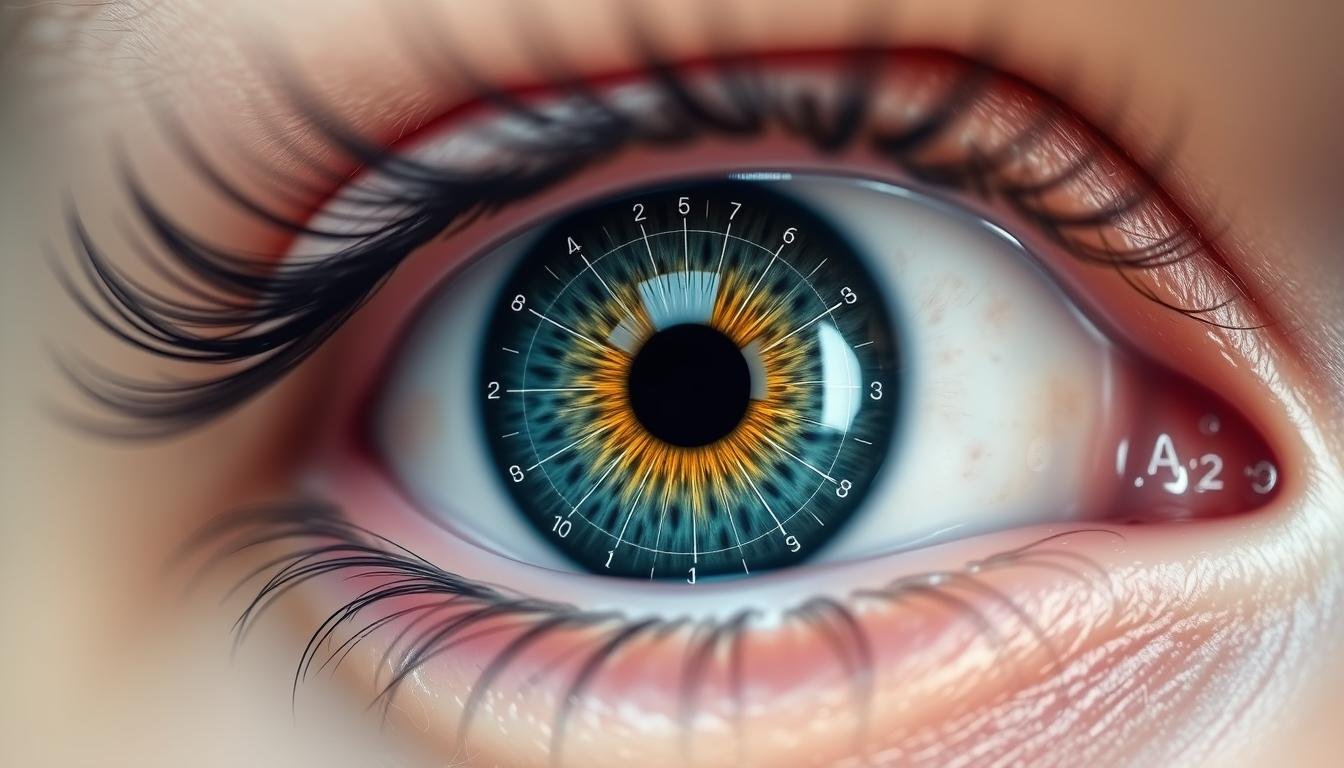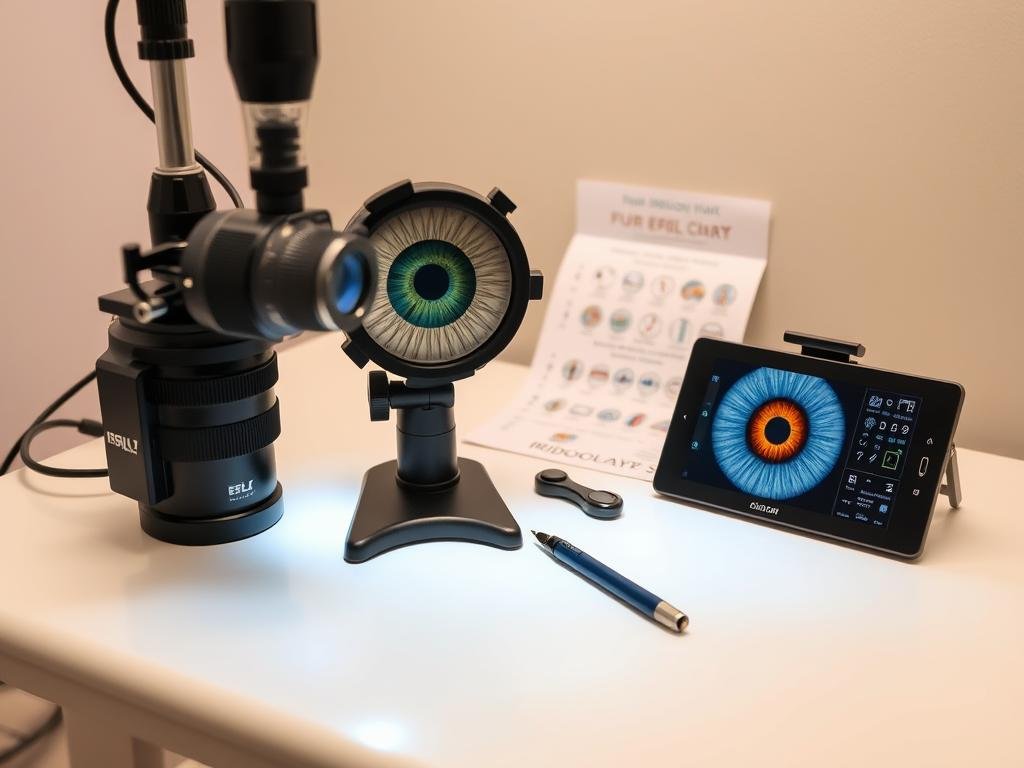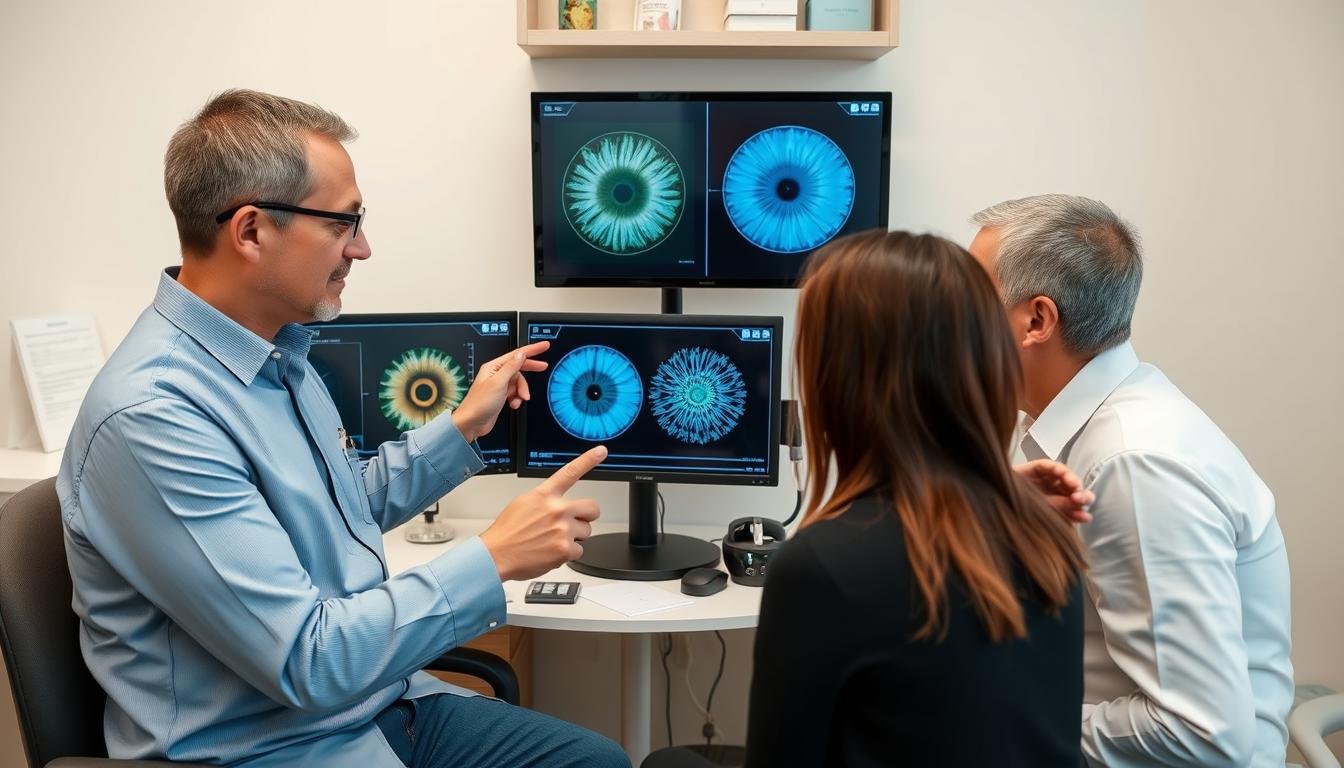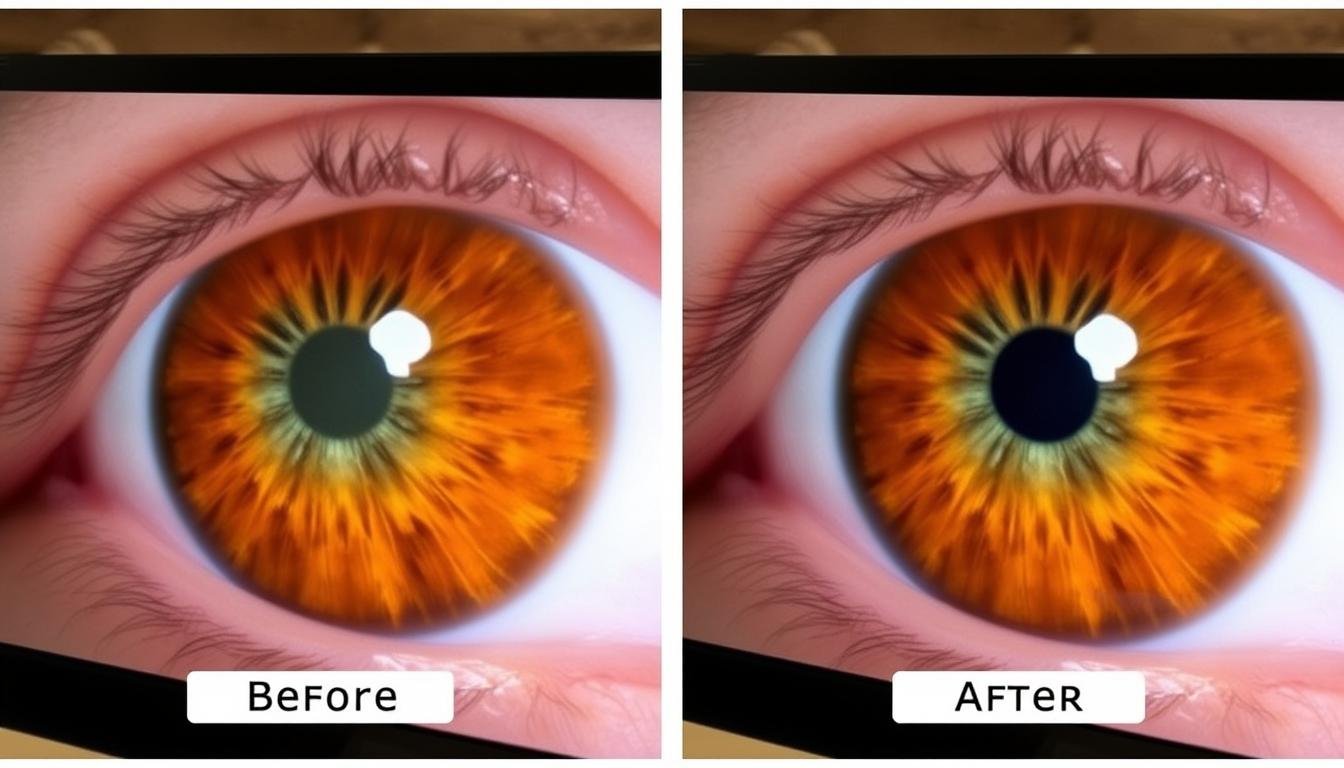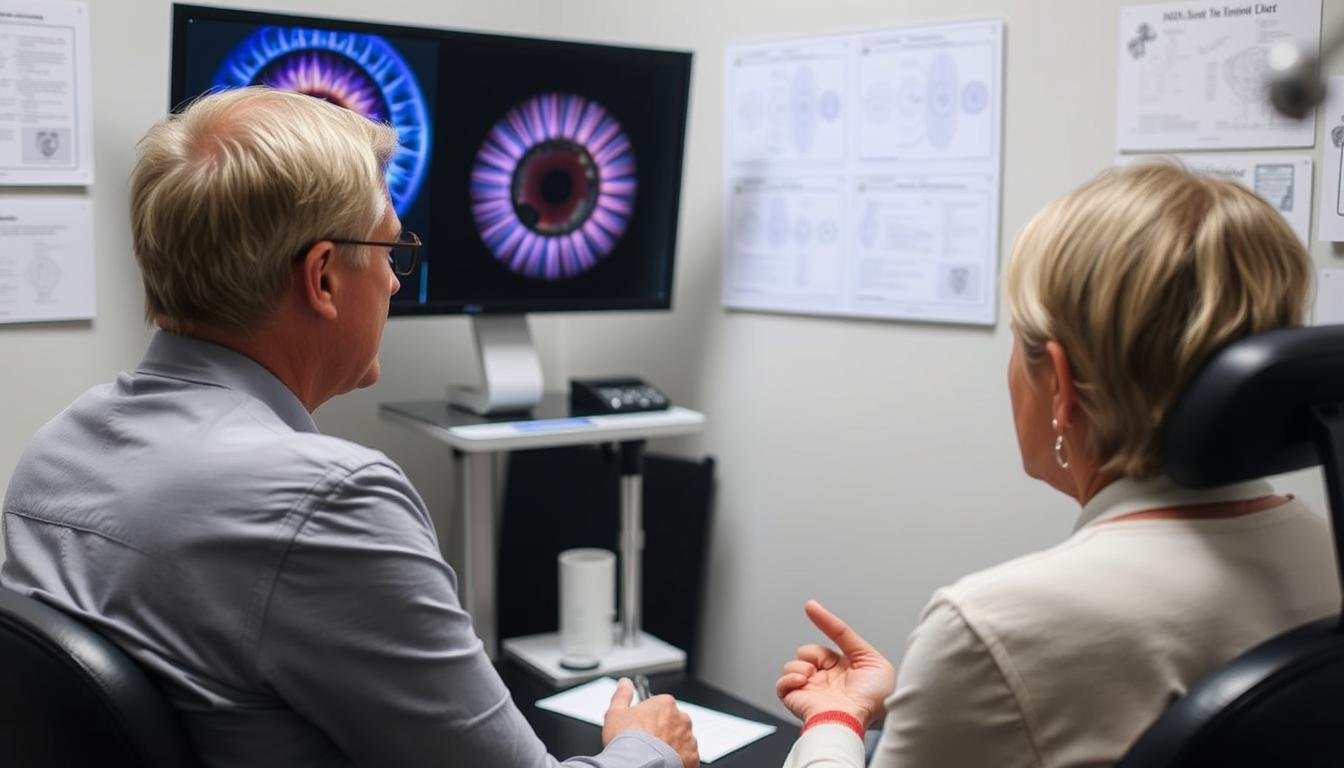Eye Reading: Curious about what happens during an iridology session? This ancient practice of examining the iris to gain insights about your health has gained popularity as a complementary approach to wellness. Whether you’re considering your first appointment or simply interested in learning more, this comprehensive guide will walk you through the entire process—from preparation to post-session recommendations.Iridology offers a unique window into your body’s health through patterns and markings in your iris. By understanding what to expect, you can approach your session with confidence and get the most value from this holistic assessment tool.
Understanding Iridology: A Brief Introduction
The iris contains detailed patterns that iridologists analyze for health insights
Iridology is the study of the iris, the colored part of your eye, which is believed to reflect information about the health of your body. This diagnostic tool has been used for over a century, with its modern foundations established by Dr. Ignatz von Peczely in the 1800s.
The practice is based on the concept that each area of the iris corresponds to different organs and systems in the body. Changes in color, pattern, or structure within these areas may indicate potential health issues or constitutional strengths and weaknesses.
Rather than diagnosing specific diseases, iridology aims to identify areas of stress or potential weakness in the body. This information can then guide preventative health measures and lifestyle adjustments.
Ready to discover what your eyes reveal about your health?
Book a consultation with a certified iridologist to gain insights into your body’s unique patterns.
Find an Iridologist Near You
Preparing for Your Iridology Session
Proper preparation ensures you get the most accurate and beneficial results from your iridology session. Here are the key steps to take before your appointment:
- Avoid caffeine for at least 24 hours before your session, as it can affect the appearance of your iris
- Stay well-hydrated in the days leading up to your appointment
- If possible, avoid wearing contact lenses on the day of your session
- Bring a list of any current medications, supplements, or herbs you’re taking
- Compile your relevant medical history, including any chronic conditions or recent health changes
- Write down any specific health concerns or questions you want to address
- Get adequate rest the night before to ensure your eyes are clear and not strained
- Remove eye makeup before your appointment for a clearer view of your iris
Many practitioners recommend avoiding alcohol and highly processed foods for 24-48 hours before your session. This helps ensure that your body’s natural state is more accurately reflected in your iris patterns.
What to Bring to Your Iridology Session
Essential Items:
- Medical history documents
- List of current medications and supplements
- Health insurance information (if applicable)
- Payment method
Helpful Additions:
- List of specific questions or concerns
- Previous iridology reports (if you’ve had sessions before)
- Recent medical test results
- Food or symptom journal (if relevant to your concerns)
Being well-prepared not only helps your practitioner provide a more thorough analysis but also ensures you get the most value from your session. Many people find it helpful to reflect on their health goals before the appointment so they can discuss them with their iridologist.
What Happens During an Iridology Session
An iridology session typically lasts between 30 minutes to an hour. The process is non-invasive, painless, and involves several key steps. Here’s what you can expect during your visit:
- Initial Consultation: Your session will begin with a discussion about your health history, current concerns, and wellness goals. This helps the iridologist focus on specific areas during the examination.
- Eye Examination: The iridologist will examine your iris using specialized equipment such as a penlight, magnifying glass, or an iriscope (a special camera designed for iris photography).
- Iris Photography: In most modern practices, high-resolution photographs of your irises will be taken. These images allow for detailed analysis and provide a record for comparison in future sessions.
- Analysis Using Iridology Charts: The practitioner will analyze your iris patterns using standardized iridology charts that map different areas of the iris to corresponding body systems and organs.
- Discussion of Findings: After the examination, the iridologist will discuss their observations with you, highlighting areas of potential concern and constitutional strengths.
Throughout the session, your iridologist may ask additional questions based on what they observe in your iris. This interactive approach helps them provide a more personalized assessment of your health patterns.
Experience the insights of iridology firsthand
Book your session today with a qualified practitioner and discover what your eyes reveal about your health.
Schedule Your Iridology Session
Equipment Used in Iridology Sessions
Magnification Tools
Specialized magnifying glasses or loupes that allow the iridologist to see fine details in the iris that aren’t visible to the naked eye.
Iriscope
A specialized camera system designed specifically for capturing high-resolution images of the iris for detailed analysis.
Iridology Charts
Reference materials that map different zones of the iris to corresponding body systems, organs, and tissues.
The quality of equipment used can significantly impact the accuracy of the analysis. Most professional iridologists use digital imaging systems that can capture subtle details and store images for comparison over time.
How Iridologists Interpret Your Iris

Iridology chart showing how different zones of the iris correspond to body systems
Iridologists analyze several key aspects of your iris to gain insights about your health. The interpretation process involves examining:
- Iris Color and Pigmentation: The base color of your iris and any variations can indicate your constitutional type and genetic predispositions
- Iris Structure: The fiber arrangement and density reveal information about your inherent strengths and weaknesses
- Markings and Signs: Specific marks such as spots, lines, or rings may indicate stress or changes in particular organs or systems
- Pupil Shape and Reactivity: The appearance and behavior of your pupil can provide insights about your nervous system
- Sclera (White of the Eye): Some iridologists also examine the sclera for additional information about your health
Eye Reading: Using the iridology chart as a reference, practitioners divide the iris into approximately 80-90 zones, each corresponding to different parts of the body. For example, the top section of the iris typically relates to the head and brain, while the lower sections often correspond to the digestive and elimination systems.
Common Iris Signs and Their Potential Meanings
| Iris Sign | Appearance | Potential Indication |
| Lacuna | Open, enclosed spaces in the iris fibers | Potential weakness or underactivity in the corresponding organ |
| Radii Solaris | Spoke-like lines radiating from the pupil | Possible toxicity or inflammation |
| Lymphatic Rosary | White circular formation around the outer iris | Lymphatic system congestion |
| Scurf Rim | Dark ring around the outer edge of the iris | Skin elimination issues or respiratory concerns |
| Nerve Rings | Circular rings in the iris | Nervous tension or stress response patterns |
Eye Reading: It’s important to understand that iridology is considered a complementary assessment tool rather than a diagnostic method. The patterns observed are interpreted as indicators of potential tendencies or areas that may benefit from support, not as definitive diagnoses of specific conditions.
After the Analysis: Understanding Your Results
Once the iris examination is complete, your iridologist will share their findings with you. This typically includes:
- An overview of your constitutional type based on iris characteristics
- Identification of potential areas of strength in your body
- Highlight of systems or organs that may be under stress
- Explanation of how current symptoms may relate to patterns observed in your iris
- Discussion of potential underlying factors contributing to health concerns
Eye Reading: Many practitioners provide a written report or digital images with annotations to help you understand and remember the information shared during your session. This documentation can be valuable for tracking changes over time if you choose to have follow-up sessions.
Important Note: Iridology is not designed to diagnose specific diseases but rather to identify potential areas of weakness or imbalance. Always consult with appropriate healthcare providers for diagnosis and treatment of medical conditions.
Personalized Recommendations
Based on the iris analysis, your practitioner will likely provide personalized recommendations that may include:
Lifestyle Adjustments:
- Dietary modifications
- Stress management techniques
- Exercise recommendations
- Sleep optimization strategies
Supportive Approaches:
- Herbal supplements
- Nutritional support
- Detoxification protocols
- Mind-body practices
Eye Reading: These recommendations are typically tailored to address the specific patterns observed in your iris and aim to support your body’s natural healing processes. Many iridologists take a holistic approach, considering the interconnections between different body systems rather than focusing on isolated symptoms.
Ready for personalized health insights?
Book your iridology session today and receive customized recommendations based on your unique iris patterns.
Book Your Session Now
Post-Session Steps: Making the Most of Your Iridology Insights
To maximize the benefits of your iridology session, consider these follow-up steps:
- Review Your Notes: Take time to review any materials provided by your iridologist while the session is still fresh in your mind.
- Implement Recommendations Gradually: Start with one or two key suggestions rather than trying to change everything at once.
- Track Your Progress: Keep a journal of any changes you notice as you implement recommendations.
- Follow Up with Healthcare Providers: Share relevant findings with your primary healthcare provider, especially if significant health concerns were identified.
- Schedule Follow-Up Sessions: Consider booking follow-up iridology sessions to track changes in your iris patterns over time.
Eye Reading: Many people find it helpful to take a phased approach to implementing recommendations, focusing first on fundamental aspects like hydration, nutrition, and stress management before moving on to more specific protocols.
Tracking Changes Over Time

Before and after iris photographs showing changes following health interventions
One of the valuable aspects of iridology is the ability to track changes in your iris patterns over time. These changes can provide visual feedback about how your body is responding to lifestyle modifications, nutritional support, or other interventions.
Many practitioners recommend follow-up sessions at intervals of:
- 3-6 months for active health concerns
- 6-12 months for general health monitoring
Eye Reading: Digital iris photography makes it possible to compare images from different sessions side by side, allowing both you and your practitioner to observe subtle changes that might indicate improvements in specific body systems.
Frequently Asked Questions About Iridology Sessions
Is iridology scientifically proven?
Iridology is considered a complementary approach and has limited scientific validation in conventional medicine. While some studies have explored correlations between iris signs and health conditions, more research is needed. Many people find value in iridology as part of a holistic health assessment, but it should complement rather than replace conventional medical care.
Does an iridology session hurt?
No, iridology sessions are completely non-invasive and painless. The practitioner simply examines your iris visually or takes photographs. There is no touching of the eye itself, and the process is similar to having a regular photograph taken.
Can iridology diagnose diseases?
Eye Reading: Iridology is not designed to diagnose specific diseases. Instead, it identifies potential areas of weakness or stress in the body. Iridologists do not claim to diagnose medical conditions but rather provide insights about constitutional tendencies and potential imbalances that may contribute to health concerns.
How much does an iridology session cost?
The cost of an iridology session varies widely depending on location, practitioner experience, and whether it’s combined with other services. Generally, sessions range from to 0. Some practitioners offer package deals for initial consultations and follow-ups. Many naturopaths include iridology as part of a comprehensive assessment.
How should I choose an iridologist?
Look for practitioners with formal training and certification from recognized organizations such as the International Iridology Practitioners Association (IIPA). Consider their experience, client reviews, and whether they have additional qualifications in related health fields. A pre-consultation phone call can help you assess their approach and communication style.
How often should I have an iridology session?
For general health monitoring, annual sessions are often sufficient. If you’re addressing specific health concerns or implementing significant lifestyle changes, follow-up sessions every 3-6 months may be beneficial to track progress. Your practitioner can recommend an appropriate schedule based on your individual needs.
Conclusion: Is an Iridology Session Right for You?
Iridology offers a unique perspective on your health by examining the intricate patterns of your iris. While not a replacement for conventional medical care, many people find value in the holistic insights and personalized recommendations that come from an iridology session.
The non-invasive nature of iridology makes it an accessible option for those interested in exploring complementary approaches to health assessment. By understanding what to expect during a session, you can approach the experience with realistic expectations and an open mind.
Whether you’re seeking to address specific health concerns or simply curious about what your eyes might reveal about your overall wellbeing, an iridology session can be an interesting and potentially valuable addition to your health journey.
Ready to discover what your eyes reveal?
Book your iridology session today with a certified practitioner and take a proactive step toward understanding your body’s unique patterns.
Find an Iridologist Near You

